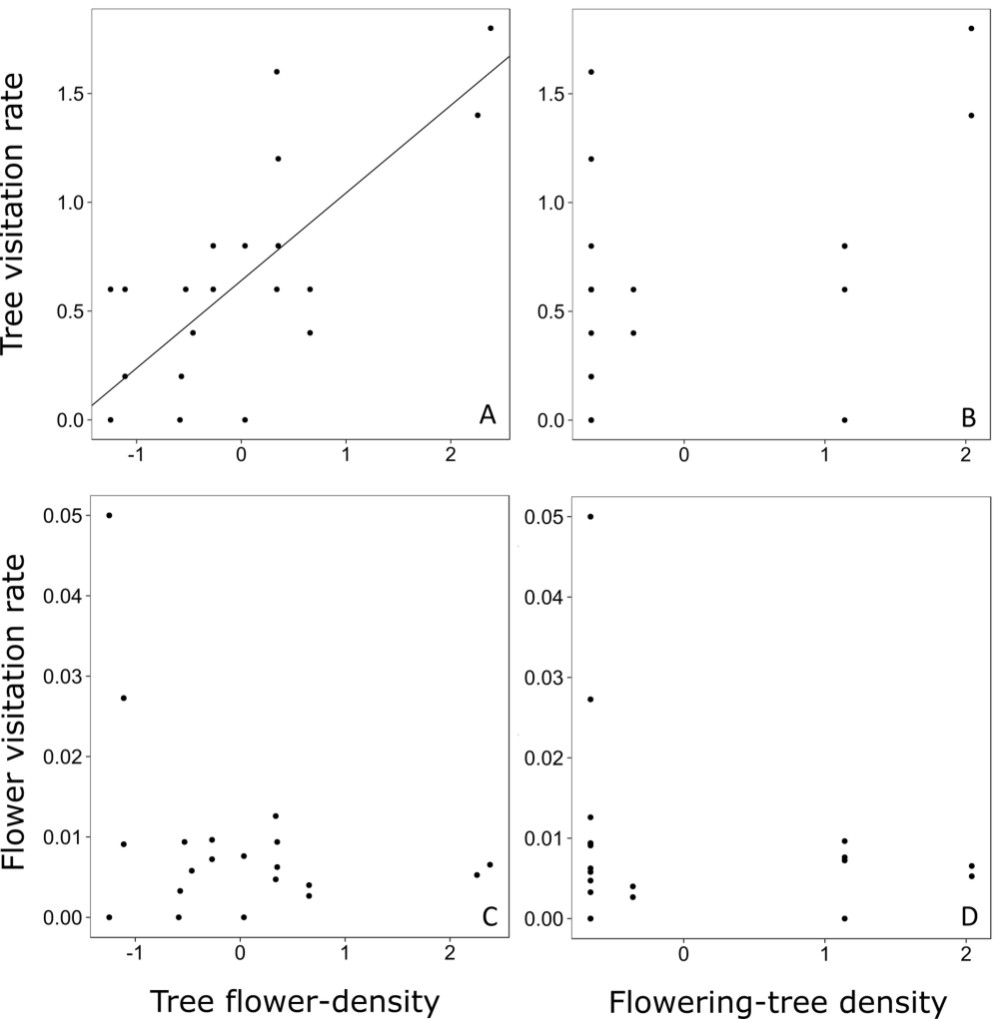ABSTRACT
Plant-pollinator interactions and their reproductive implications are of central importance to the organization of plant populations and communities in restoration areas. We studied the breeding system and flower visitors of Pleroma trichopodum, a pioneer species of the Atlantic Forest. We attempted to answer three questions: (1) Is P. trichopodum dependent on pollinators and mates for reproduction? (2) What are the pollinators of P. trichopodum? (3) Do tree flower-density and flowering-tree density of P. trichopodum enhance the visitation rate of focal trees and their flowers? We tested the breeding system through pollination treatments. We performed focal observations on 10 trees and analyzed the relationship between tree and flower visitation rates, and the tree flower-density and flowering-tree density with Generalized Linear Mixed Models (GLMM). Pleroma trichopodum sets fruits by selfing and outcrossing, both of which occur only through pollinator visits. Bees visited P. trichopodum, and their visitation increased with tree flower-density. Thus, individuals with greater floral displays may function as magnet species, enhancing the pollination of nearby plant species. This characteristic, allied with the ability to reproduce without a mate (selfing) and a tolerance of soggy soils, make P. trichopodum a candidate for Atlantic Forest restoration.
Keywords:
Atlantic Forest; breeding system; floral density; pioneer; plant-pollinator interactions; Pleroma trichopodum; restoration; selfing

 Thumbnail
Thumbnail
 Thumbnail
Thumbnail

